Fusion Reactor Engineering
Fusion Reactor Engineering
Research on development of superconducting magnet
In the field of Fusion Reactor Engineering, the two essential research issues, superconducting magnet engineering for a high confinement magnetic field and development of advanced blanket systems for power generation and fuel breeding, are being promoted. In addition, academic research for a wide range of industrial fields beyond fusion engineering is being conducted through cutting-edge technological development for the fusion system.
System design for the helical fusion reactor, such as the helical DEMO reactor, is also ongoing through international collaborations. In that framework, research and development concerning the fusion system design, the optimum confinement magnetic field configuration, the engineering design of the superconducting magnet system, the design of the support structure of the magnetic coils, and the blanket system are being promoted.
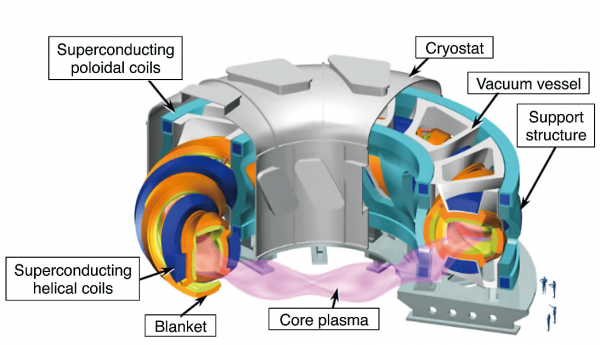
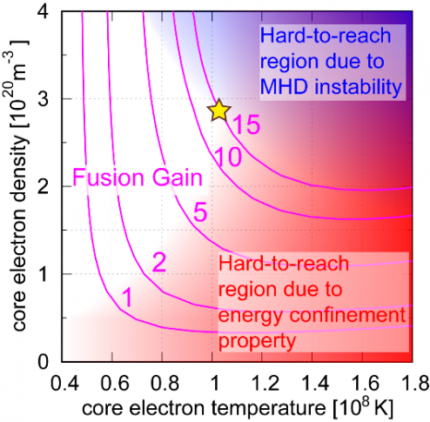
Research on Applied Superconductivity and Cryogenic Engineering
The large-scale magnet system for the fusion reactor requires high-performance superconductors with 100 kA-class current capacity. Research is being conducted for developing such an advanced conductor made of metallic low-temperature superconducting (LTS) materials as well as of copper-oxide high-temperature superconducting (HTS) materials.
By combining LTS strands, large-current capacity conductors are being developed to enhance the present performance used in superconducting fusion devices, including LHD and ITER. In addition, the conduction-cooled conductor is also being investigated for its feasibility. State of the art HTS tapes are used to assemble a 100-kA-class stacked-type conductor. For strands, low activation materials are also being investigated.
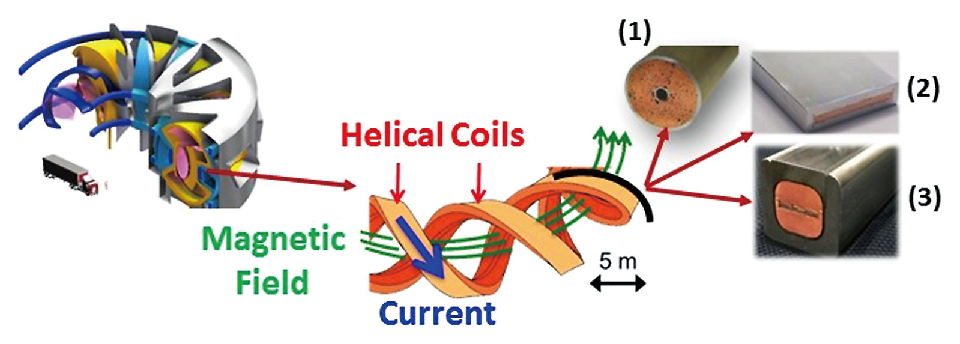
Three kinds of large-scale superconductors developed for the magnetic coils of the helical fusion reactor: (1) LTS CIC (cable-in-conduit) conductor (photo: the ITER-TF conductor), (2) LTS conductioncooled conductor, and (3) HTS STARS (Stacked Tapes Assembled in Rigid Structure) conductor.
Components in fusion magnet systems are subjected to intense electromagnetic forces. Research is ongoing so as to precisely evaluate the expected stress on component materials and to seek the optimum coil supporting structure. The engineering design of the coil winding and fabrication method is also in progress.
To cool superconducting magnets, large-scale cryogenic systems are indispensable, and cryogenic engineering is an important research field. For the demo fusion reactors, various cooling methods are being investigated, such as liquid helium, supercritical helium, superfluid helium, gaseous helium, and conduction cooling. Their characteristics are being investigated in experiments and numerical simulations.
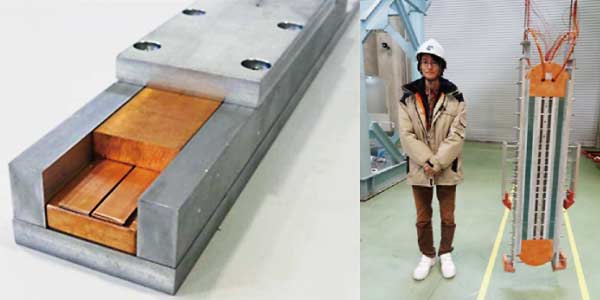
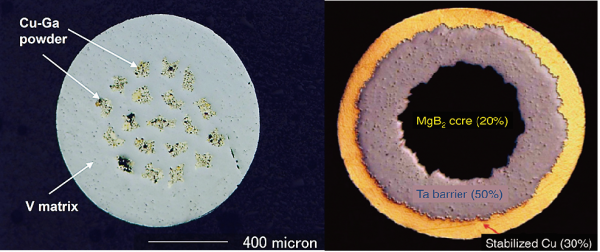
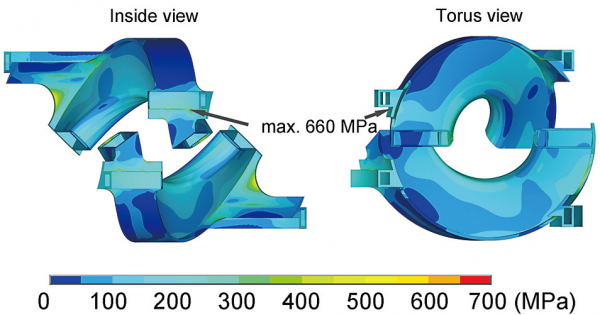
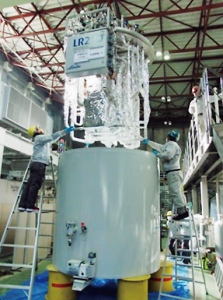
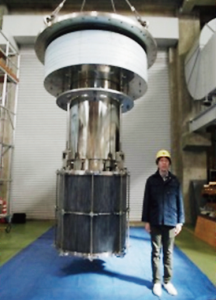
Research on development of advanced blanket systems
The activities for fusion reactor designs and experiments are strongly coupled in the Fusion Engineering Research Project (FERP). In a fusion reactor, a core plasma is surrounded by thick components called “blanket.” The blanket converts the energy of fusion neutrons from the core plasma to thermal energy, and the reactor then generates electricity. Academic research is being conducted for development of long-duration advanced blanket systems which adopt molten salts or liquid metals as fuel breeders/coolants.
Research on fusion blanket design
A fusion blanket receives fast neutrons generated in a core plasma. Conversion of neutron energy to thermal energy, tritium fuel breeding, and radiation shielding are required functions to be performed efficiently in a blanket. Optimization of material combination and configuration for the blanket systems, and design of blanket components for a helical-type fusion reactor are being investigated by numerical calculations reflecting progress in material and system development. Validation of the investigations is performed by experiments in collaboration with universities, the Japan Atomic Energy Agency (JAEA), and other organizations.
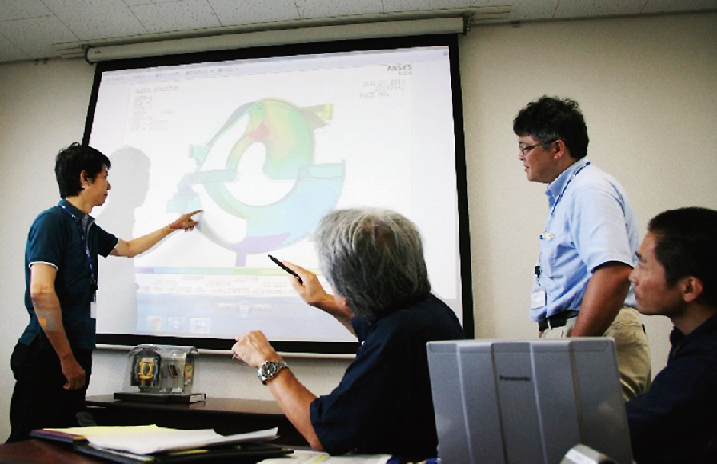
Integrated research on liquid blanket technologies and systems
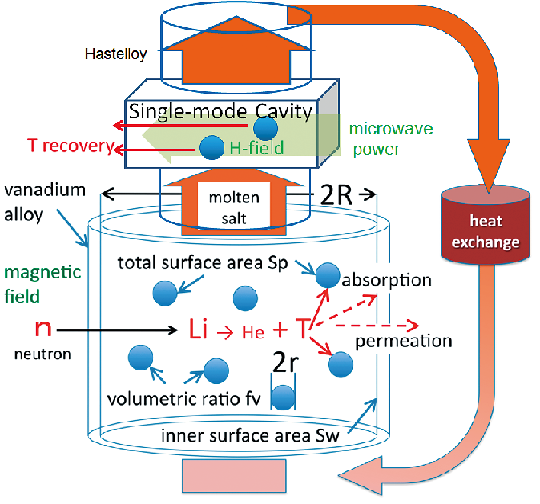
A model of hydrogen transfer control in a moltensalt coolant by mixed metal nano-powders
In parallel with fundamental studies on properties of liquid fuel breeder/coolants and technologies for blanket systems, integrated experimental studies have been started with the newly constructed Flinak/LiPb twin-loop OROSHHI-2 (Operational Recovery Of Separated Hydrogen and Heat Inquiry-2). Compatibility of materials, control of coolant flow, transfer and recovery of heat and hydrogen, and other topics can be studied by simulating a blanket temperature (300- 550 ℃ ), coolant flow velocity (up to 1.5 m/s), and high magnetic field by using the 3 T super conducting magnet (the world’s highest magnetic field for this purpose). Topics of focus at present are non-equilibrium mass and heat transfer in the circulated coolants, control of hydrogen transfer by mixed metal nano-powders, and others.
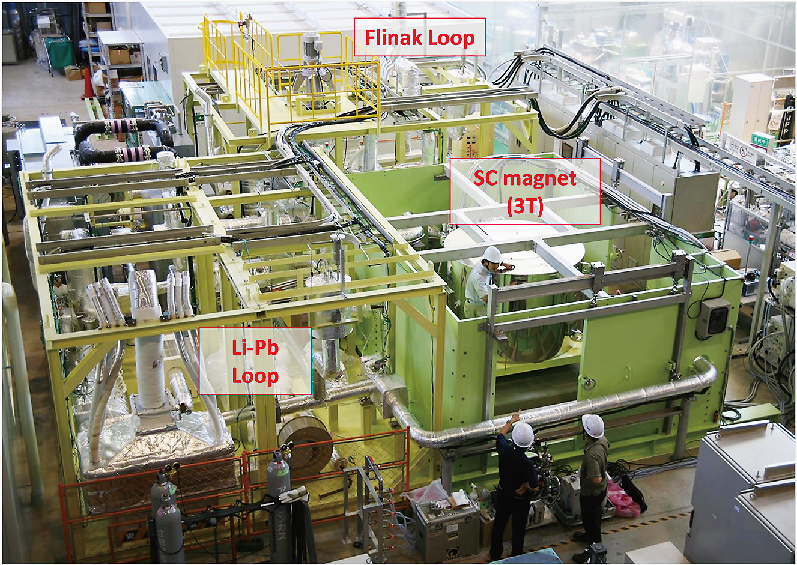
Research on development of structural materials
Since a blanket is irradiated by high-energy neutrons during reactor operation, low activation materials, the radioactivity of which decays quickly after reactor shutdown, must be used for the fabrication. NIFS is leading the development of vanadium alloys as a promising candidate.
The low activation vanadium-alloy “NIFS-HEAT” has been produced for round-robin testing of property evaluation and studies on blanket fabrication technologies. Fundamental research for property improvement has been conducted in collaboration with universities.
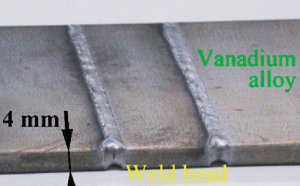
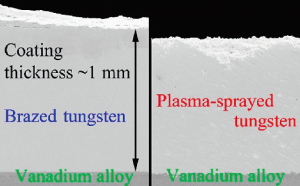
Research on functional and advanced materials
Ceramic coating technologies have been studied for suppression of MHD (Magnetohydrodynamics) pressure drop, that is, electromagnetic brake, in liquid metal coolant flowing across a magnetic field and also for suppression of hydrogen fuel permeation through high temperature blanket components. Activities for development of advanced fusion materials are expanding the topics to ODS (Oxide Dispersion-Strengthened) Cu alloys for efficient divertor cooling, ODS steels for advanced blanket systems, neutron shielding materials, and others, with a newly installed HIP (Hot Isostatic Pressing) apparatus.
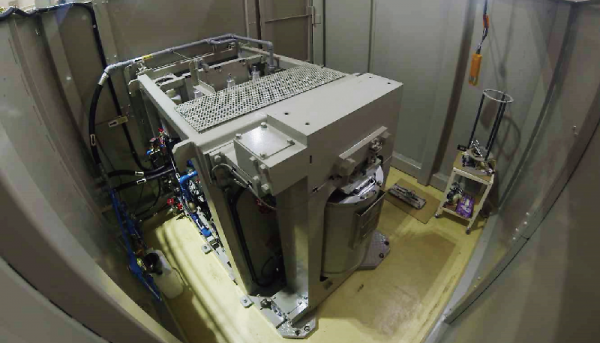
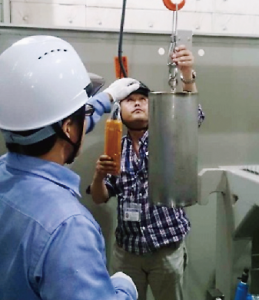
Radiation Safety Engineering
Our research group studies and develops radiation safety management, tritium handling technology, and environmental radiation research around the fusion facility. In the future fusion reactor, tritium will be utilized as fuel, and radiation such as neutrons will be generated by fusion reactions. Tritium is a radioactive isotope and the neutron generates the activation products. From the viewpoints of radiation management and public acceptance, there are various research topics such as recovery and separation of hydrogen isotopes, new concepts of radiation protection and radiation measurement in the work environment, techniques for environmental impact assessment, design of fusion system safety, and others. Also, these topics will be connected with the radiation safety management of the deuterium plasma experiment by the LHD.
Study of radiation protection in the fusion facility
Neutrons generated by fusion reactions activate the material in the fusion device and other equipment in the fusion facility. Then, the radioactive materials activated by neutrons distribute in the work environment. To make a working plan after activation, it is necessary to predict and understand the space-time distribution of radioactive materials.
The distribution of radioactive materials is predicted by a neutron particle transport calculation code. Then, the intensity distribution of radiation is calculated from the calculation results of the activation. Regarding the radiation measurement, the visualization measurement device of radiation source at a distant place is being developed to measure activation materials. We are discussing a suitable radiation work plan using the calculation results and the radiation measurements.
Recovery and separation of hydrogen isotopes
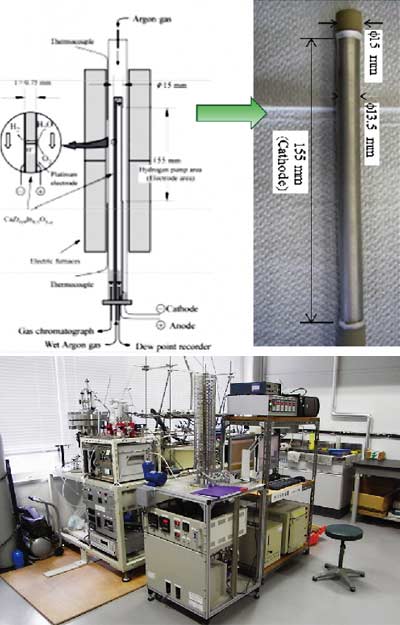
Tritium and deuterium will be utilized as fuels in the future fusion reactor. The burning rate in the core plasma is designed to be a few percent. Thus, the unburned hydrogen isotopes must be recovered from the exhaust gas for fuel recycling. Recovered hydrogen isotopes are purified and separated for reusing. These processes are called the “fuel cycle system.” To realize the fusion reactor, the development and establishment of the fuel cycle system is one of the important issues.
The membrane separator systems are investigated for the purification of hydrogen isotopes. For example, the application of a high temperature type solid-state protonconducting membrane has been proposed as the electrochemical hydrogen pumping system. It has attractive advantages such as hydrogen extraction from both hydrogen molecules and hydrogen compounds, control by electric current, no pressurization, processing in gaseous state under elevated temperature, and others. In this research topic, the one-end closed tube type of the proton-conducting membrane is utilized from the viewpoint of practical use. Then, the performance of the electrochemical hydrogen pump and the behavior of charge carriers in the proton conductor are investigated. The experiments using tritium gas are conducted in the isotope separation laboratory at Nagoya University.
Development of advanced tritium removal system
When tritium gas leaks in an experiment room, it is necessary that this gas be recovered as soon as possible by a tritium removal system. A conventional tritium removal process is to convert hydrogen and methane gases to water by an oxidation catalyst and to dehumidify with an adsorption bed. The conventional bases of catalyst and adsorption materials were ceramic particle packed beds. However, high throughput of air caused a large pressure drop in the packed bed. Thus, we propose the honeycomb shape samples which are of a low pressure drop. To design the tritium removal system, it is important to understand the performance of honeycomb shape catalysts.
A series of honeycomb-shape substrates made by ceramics and metals as the oxidizing catalysts are being developed with particular companies. The characterizations of the catalysts are analyzed by the electron microscopes, the adsorption isotherm method for surface area, pore size distribution measurements, and other methods. The oxidation performances of the catalysts are evaluated by the original fixed bed catalyst reactor under the various gas compositions and experimental conditions. Then, we consider the catalyst properties from the aspect of chemical kinetics.
New technique for gaseous tritium monitoring
The detection of low level tritium is one of the key issues for tritium management in tritium handling facilities. Various types of tritium monitors, such as ionizing chambers, proportional counters, and scintillation-type detectors, have been developed. Tritium emits low energy beta particles, and the detection of tritium in the presence of other radionuclides such as 41Ar and 222Rn is a particular challenge since higher-energy radiation is generated by these nuclides rather than by tritium. The detector response to radiation from these other species generally obscures the detector response to tritium.
A new tritium gas monitor is being developed by applying several techniques. As one of the techniques, a pulse-shape analyzer method to eliminate noise pulses that affect tritium measurements is utilized as the signal-processing unit of the tritium gas monitor. The experiments using tritium gas are conducted in the isotope separation laboratory at Nagoya University.
Other research themes
- Design of radiation safety management system for the fusion facilities
- Study of hydrogen isotopes behavior and mass balance in a fusion system
- Investigation of the environmental behavior of tritium
- Development of a new pre-treatment system for plant samples containing tritium
- Development of an advanced tritium monitoring system by a plastic solid scintillator
- Development of tritium safe handling technology
- Radiation shielding analysis around the fusion device
- Regeneration of tritium adsorbent material by microwave heating techniques
- Combustion of hydrogen isotope compounds by an atmospheric pressure plasma jet
- Electromagnetic compatibilities in the magnetic confinement fusion test facilities





